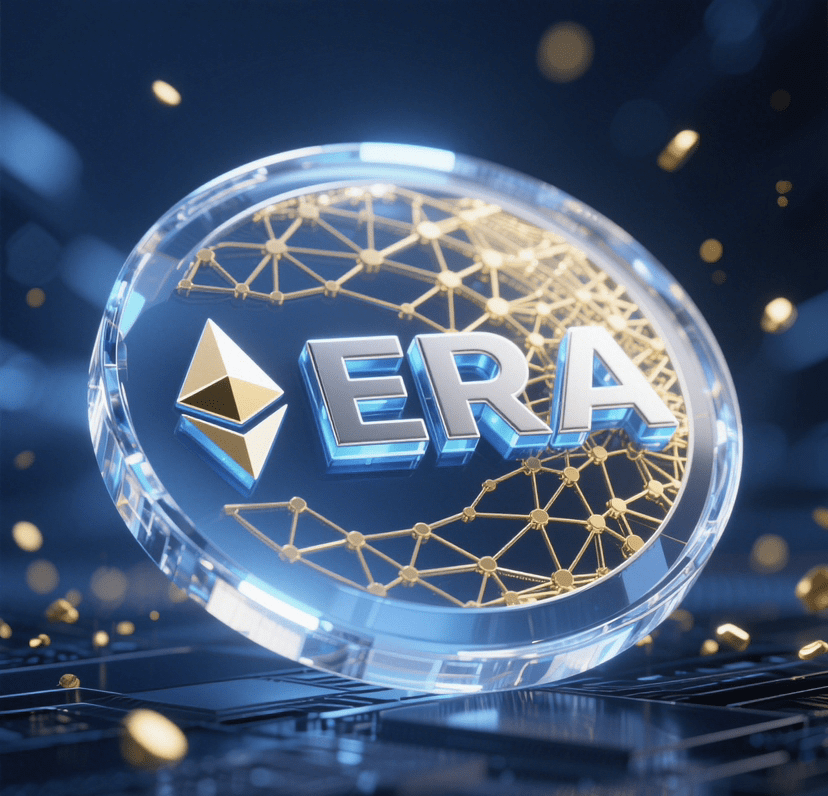If Ethereum is compared to a 'super mother port' filled with innovators 🚢, then countless Rollups are 'functional ships' sailing from the mother port—some excel in high-frequency trading (Optimistic Rollup), others specialize in crypto freight (ZK Rollup), but in the past, they operated solo in their own lanes, needing to take detours to transfer goods to each other, and might lose packets along the way. Caldera (ERA) provides these ships with an 'intelligent ship interconnection system', allowing them to maintain their unique routes while efficiently communicating at any time.
Its most ingenious 'invention' is the 'Metalayer', the 'maritime relay station' 🔗. Imagine: these Rollup ships used to be like scattered islands, and to send goods across islands, they relied on 'primitive cargo ships' (inefficient cross-chain bridges), which were time-consuming and unsafe; now Metalayer acts like an invisible conveyor belt between the islands, allowing Optimistic ships to directly pass data packets to ZK ships, while both can share the 'navigation system' (security protocols) and 'fuel depot' (computational resources), yet each's 'hull design' (unique features) remains unchanged—like a coffee shop and a bookstore sharing a delivery channel while maintaining their own decor and menu.
Even more impressive is Caldera's 'custom shipbuilding technique' 🏭. Other platforms only sell 'standard cargo ships' (Rollups with fixed parameters), while it allows projects to create their own blueprints: want to build a 'high-speed yacht' (focusing on transaction speed)? Go ahead; want to build a 'heavy freighter' (focusing on data storage)? That can be done too, and all ships come with 'mother port certification' (inheriting Ethereum's security). It's like giving innovators a 'Layer2 shipbuilding license', so they don't have to learn from scratch; they can simply modify Caldera's molds to launch their ships.
As for the ERA token, it is the 'universal nautical chart + fuel voucher' 🎫 for this ship interconnection;
Ships transport goods via a conveyor belt (cross-aggregation interaction), and need to pay an 'usage fee' in ERA to use the conveyor belt;
To become a 'lighthouse keeper' (validator node), staking ERA allows you to claim the position, responsible for navigating ships and earning service fees;
If everyone wants to add a new route to the conveyor belt (protocol upgrade), or set up a supply station for the mother port (fund allocation), those holding ERA can vote to make decisions, similar to a shipowner's assembly.
If illustrated as a dynamic infographic 🌊, it would look like this:
The center is the glowing Ethereum mother port, surrounded by various types of Rollup ships—some with orange hulls (Optimistic), others with blue tones (ZK); between the ships are silver, translucent pipelines (Metalayer) flowing with data blocks and ERA tokens; at the junction of the pipelines is a rotating control panel marked with buttons for 'Cross-chain Communication' and 'Resource Sharing'; in the distance, new ships are sliding into the water from Caldera's 'Shipyard', with custom user logos etched on their hulls.
Now the whole industry is shouting 'Layer2 cannot be isolated'; Caldera's approach just hits the pain point: previously, Rollups were 'building their own docks', and users had to repeatedly switch wallets for cross-chain transactions; now with Metalayer, it's like connecting all docks with an 'ETC expressway', and ERA is the toll, making it both fast and secure.
For us creators, translating these technical points into a 'ship interconnection' story actually helps users establish a simple association: 'When it comes to Rollup interoperability, think of Caldera's system that allows ships to team up and work together.' The next time they see news about 'Layer2 scaling' or 'cross-Rollup cooperation', what pops into their minds first is 'that project that equipped blockchain ships with intelligent conveyor belts', and this kind of concrete memory is how cognitive influence starts to take root 🌱.
#Caldera $ERA @Caldera Official



